Abstract
Temporal modulation thresholds were determined for monocular viewing and for binocular viewing of stimuli presented in phase or in counterphase to each eye of observers with normal binocular vision and those lacking stereopsis. The results showed that in individuals with normal binocular vision sensitivity was much greater for in-phase than for counterphase stimulation at low temporal frequencies, but that this superiority declined at higher temporal frequencies. Averaged across frequencies, binocular sensitivity for in-phase stimulation was 40-50% higher than monocular sensitivity. In contrast, in the observers lacking stereopsis the ratios of binocular in-phase/monocular sensitivity averaged 1.02, and there were no significant differences in sensitivity to in-phase and counterphase stimulation. This failure of binocular integration at threshold does not result from differences in transmission time between the 2 eyes. However, while individuals lacking stereopsis showed an absence of binocular interaction for uniform-field flicker at threshold, they showed suprathreshold dichoptic temporal frequency masking which was similar to that found in normal persons.
Full text
PDF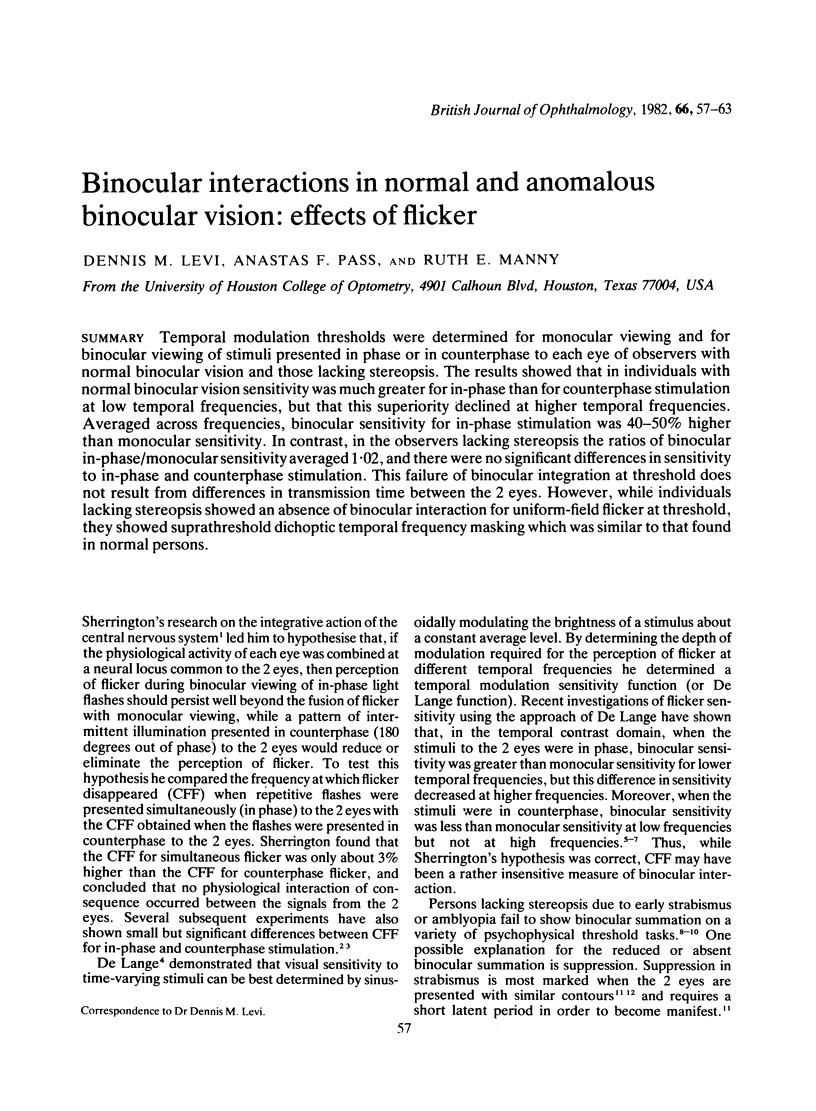
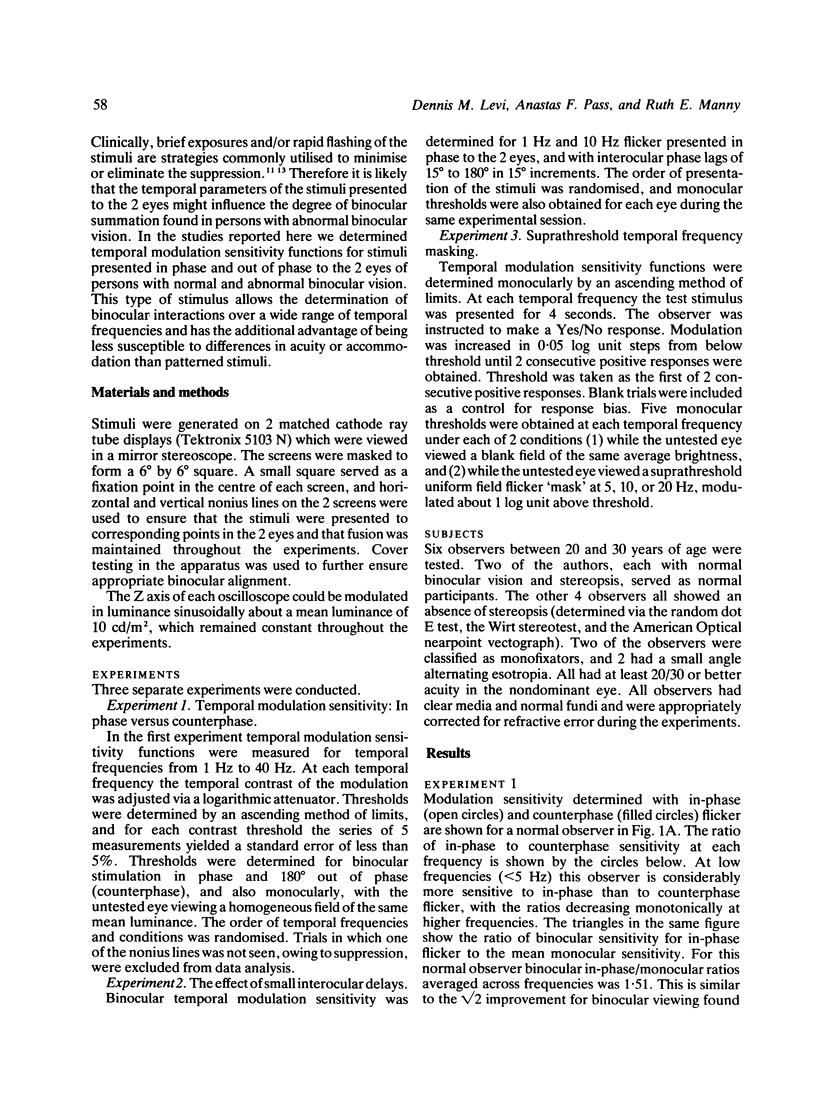
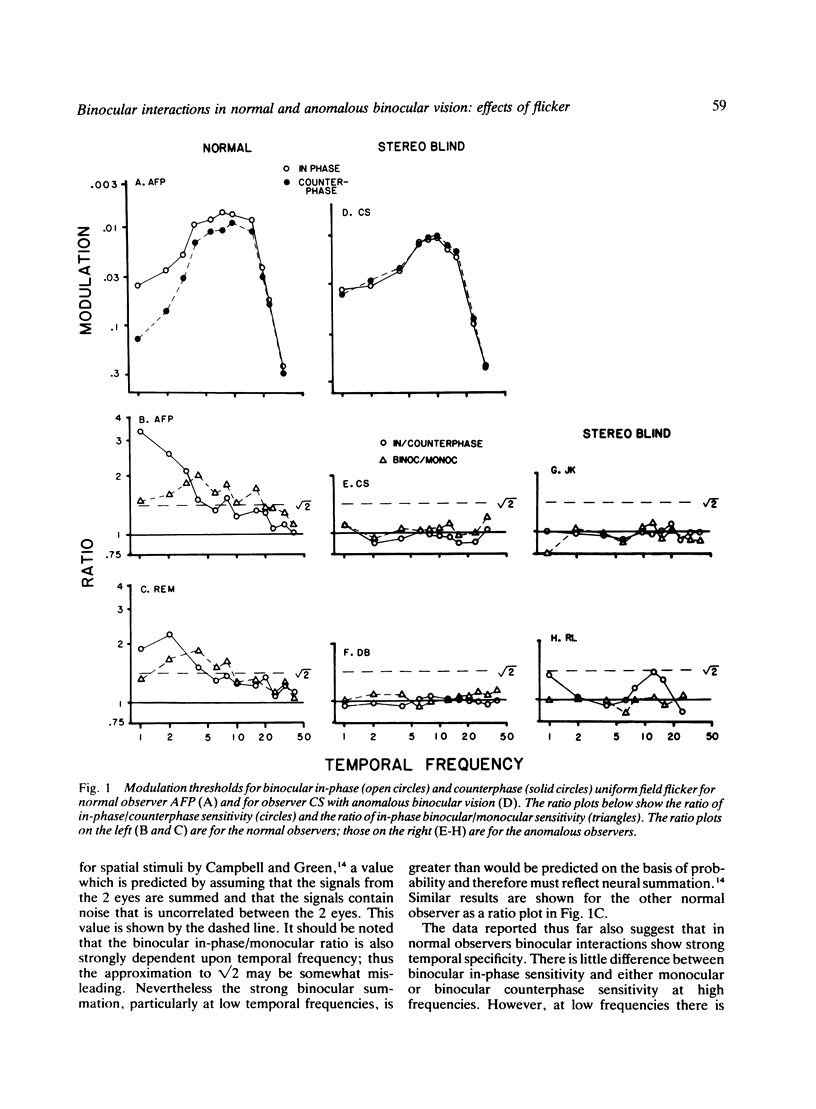

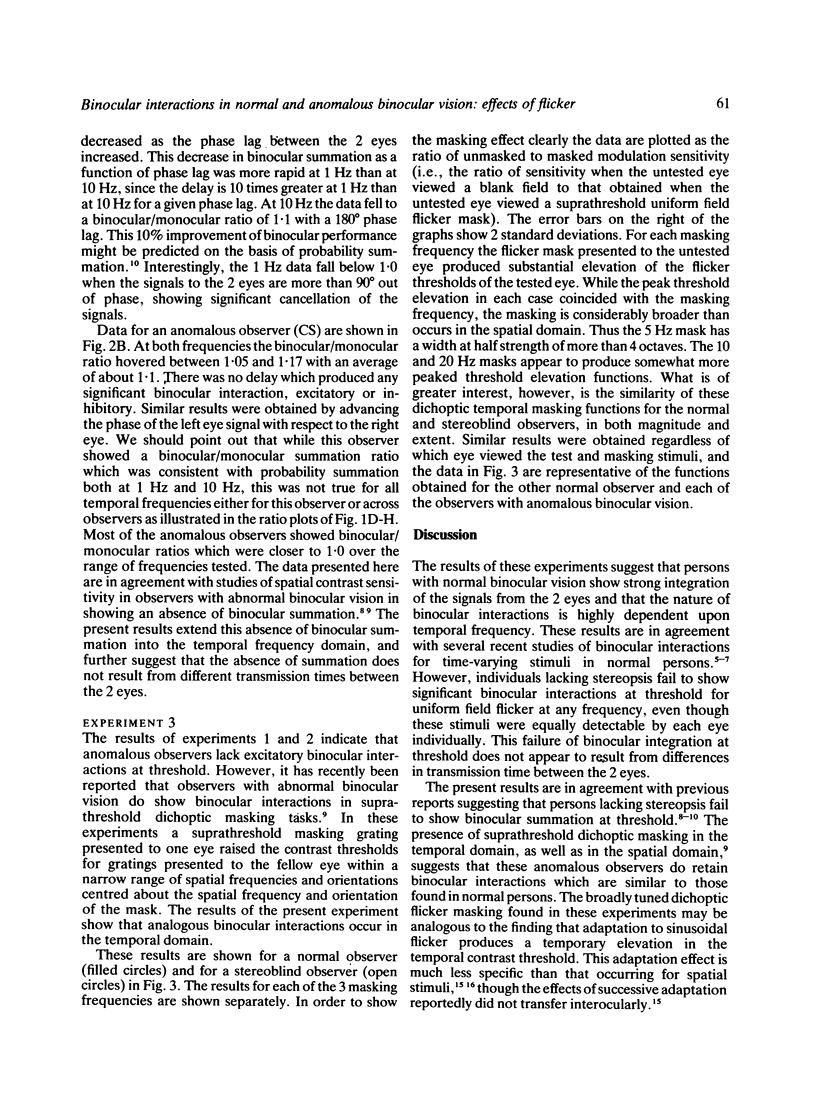
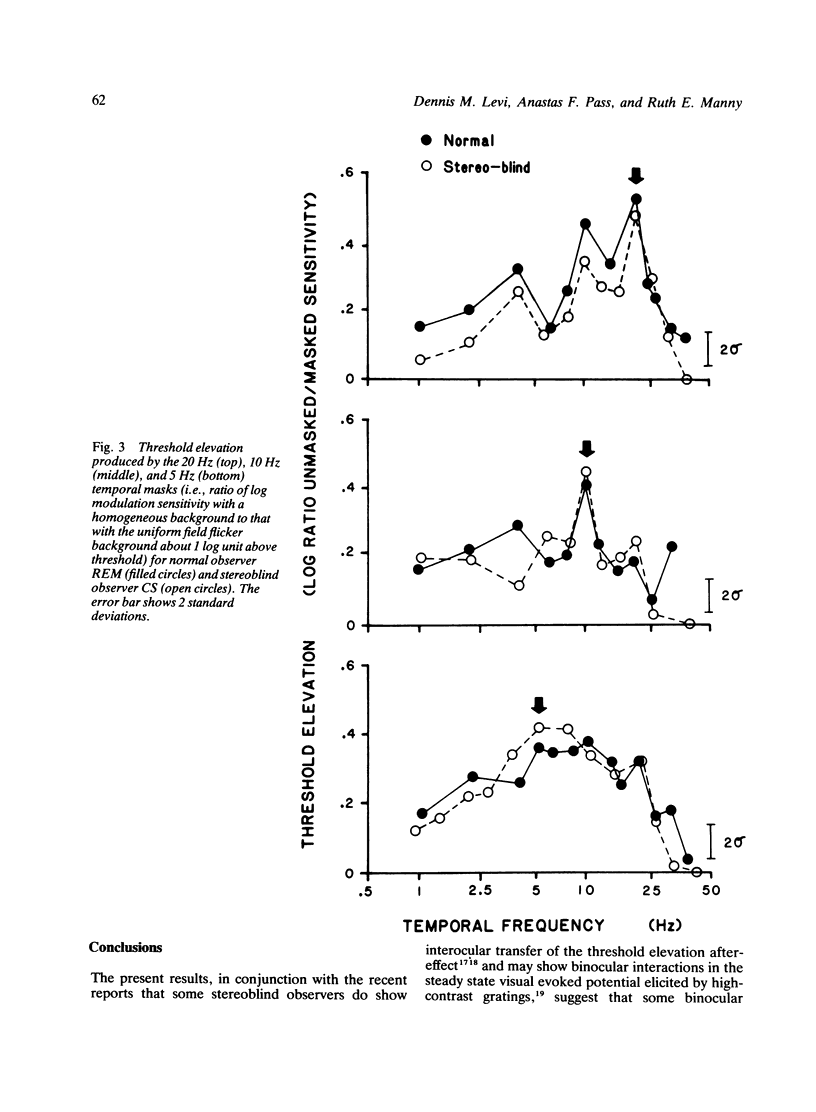
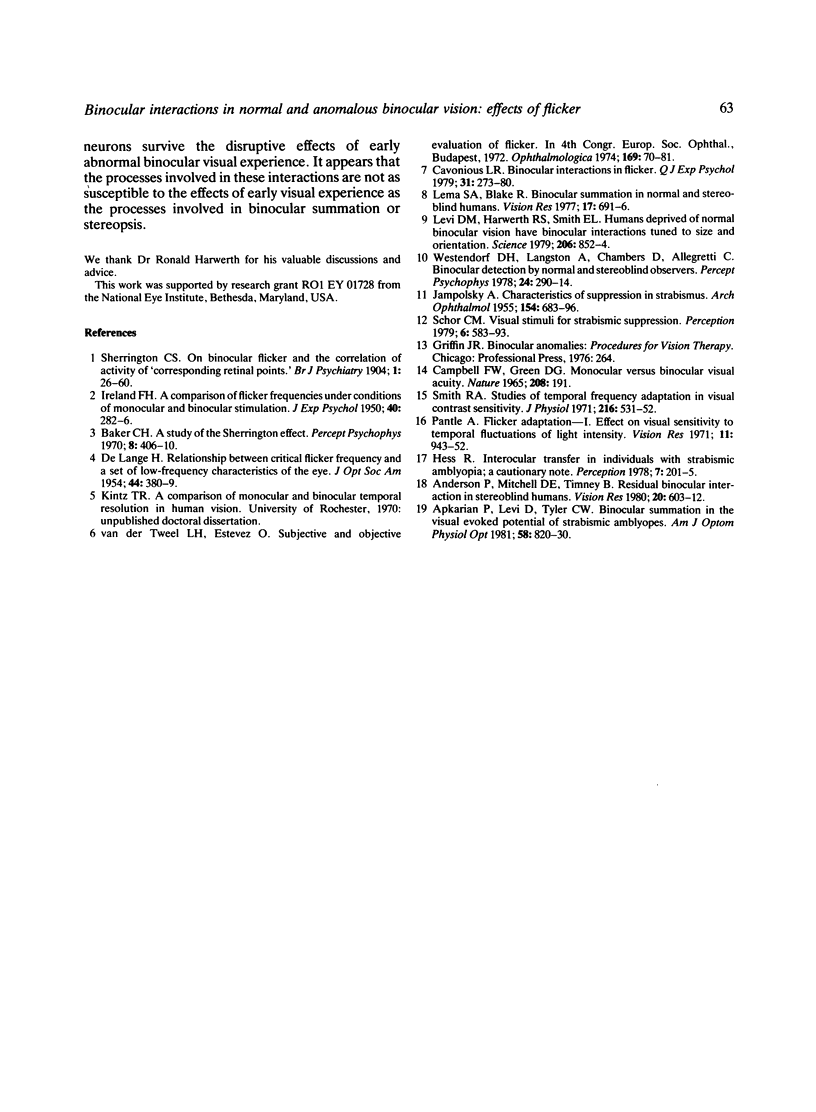
Selected References
These references are in PubMed. This may not be the complete list of references from this article.
- Anderson P., Mitchell D. E., Timney B. Residual binocular interaction in stereoblind humans. Vision Res. 1980;20(7):603–611. doi: 10.1016/0042-6989(80)90117-0. [DOI] [PubMed] [Google Scholar]
- Apkarian P., Levi D., Tyler C. W. Binocular facilitation in the visual-evoked potential of strabismic amblyopes. Am J Optom Physiol Opt. 1981 Oct;58(10):820–830. doi: 10.1097/00006324-198110000-00007. [DOI] [PubMed] [Google Scholar]
- Campbell F. W., Green D. G. Monocular versus binocular visual acuity. Nature. 1965 Oct 9;208(5006):191–192. doi: 10.1038/208191a0. [DOI] [PubMed] [Google Scholar]
- Cavonius C. R. Binocular interactions in flicker. Q J Exp Psychol. 1979 May;31(2):273–280. doi: 10.1080/14640747908400726. [DOI] [PubMed] [Google Scholar]
- DE DZN H. L. Relationship between critical flicker-frequency and a set of low-frequency characteristics of the eye. J Opt Soc Am. 1954 May;44(5):380–389. doi: 10.1364/josa.44.000380. [DOI] [PubMed] [Google Scholar]
- Hess R. Interocular transfer in individuals with strabismic amblyopia; a cautionary note. Perception. 1978;7(2):201–205. doi: 10.1068/p070201. [DOI] [PubMed] [Google Scholar]
- IRELAND F. H. A comparison of critical flicker frequencies under conditions of monocular and binocular stimulation. J Exp Psychol. 1950 Apr;40(2):282–286. doi: 10.1037/h0056471. [DOI] [PubMed] [Google Scholar]
- JAMPOLSKY A. Characteristics of suppression in strabismus. AMA Arch Ophthalmol. 1955 Nov;54(5):683–696. doi: 10.1001/archopht.1955.00930020689010. [DOI] [PubMed] [Google Scholar]
- Lema S. A., Blake R. Binocular summation in normal and stereoblind humans. Vision Res. 1977;17(6):691–695. doi: 10.1016/s0042-6989(77)80004-7. [DOI] [PubMed] [Google Scholar]
- Levi D. M., Harwerth R. S., Smith E. L., 3rd Humans deprived of normal binocular vision have binocular interactions tuned to size and orientation. Science. 1979 Nov 16;206(4420):852–854. doi: 10.1126/science.493988. [DOI] [PubMed] [Google Scholar]
- Pantle A. Flicker adaptation. I. Effect on visual sensitivity to temporal fluctuations of light intensity. Vision Res. 1971 Sep;11(9):943–952. doi: 10.1016/0042-6989(71)90214-8. [DOI] [PubMed] [Google Scholar]
- Schor C. M. Visual stimuli for strabismic suppression. Perception. 1977;6(5):583–593. doi: 10.1068/p060583. [DOI] [PubMed] [Google Scholar]
- Smith R. A., Jr Studies of temporal frequency adaptation in visual contrast sensitivity. J Physiol. 1971 Aug;216(3):531–552. doi: 10.1113/jphysiol.1971.sp009539. [DOI] [PMC free article] [PubMed] [Google Scholar]
- Van der Tweel L. H., Estévez O. Subjective and objective evaluation of flicker. Ophthalmologica. 1974;169(1-3):70–81. doi: 10.1159/000307112. [DOI] [PubMed] [Google Scholar]


